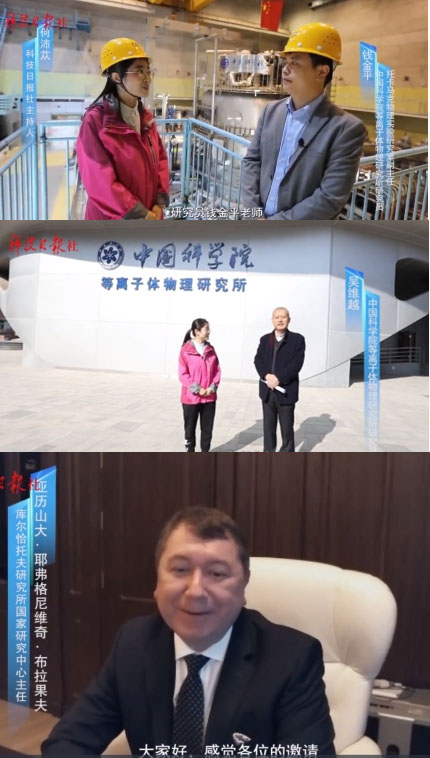“I am so glad to have a virtual tour to EAST TOKAMAK facility that is super cool,” said excitedly a Russian pupil after he had a virtual tour to the EAST fusion facility.
Travel to the Manmade Sun, a China-Russia online scene course opened up on November 20th, as a section within China-Russia Sci-tech Years which started this August and would last for two years.
The special kid-inspiration online course was scheduled to hold on the World Children’s Day as a well-designed and prepared gift to inspire Chinese and Russian kids by exposing them to a real scientific scene at their early age.
The course was produced under the guidance of International Collaboration Division within the Ministry of Science and Technology of the People’s Republic of China and involved HFIPS and its Russian Partner the KURCHATOV Institute to take part in via remote connection. With more than forty medias’ participation and the network technique, the online course could reach thousands of kids across China and Russia.
Centered on China and Russia scientific innovation, the course was composed of a virtual tour and Q&A in which the kids could know how the fusion reaction takes place, whether many manmade suns could make the Earth too hot, if fusion power is safe, and the friendly stories behind the scientific collaboration between China and Russia in fusion research.
While the COVID-19 is spreading across the world, bringing huge challenge to humans than ever before, love for kids and science for all humans could always bring us together.
Since its opening, activities under China-Russia Sci-tech Years are still on overcoming many difficulties caused by the epidemic, so is the collaboration of HFIPS with its Russian partners.
On the Years’ opening day, a NICA -Focused Collaborative Agreement was signed that involves HFIPS’ joint work with Joint Institute for Nuclear Research. As scheduled, there are more activities between HFIPS and its Russian partners will get the wheels in motion in the following year.
In fact, HFIPS has a long time collaboration with Russian scientific institutions and universities. Besides the NICA-focused collaboration in superconducting technology, China-Russia Research Center for Atmospheric Optics was established last year to push further its collaboration on Lidar atmospheric detection with Institute of Atmospheric Optics (or IAO) under Russian Academy of Sciences. Several collaborative agreements, focusing on high-power supply, accelerator, medical equipment and special crystal, were achieved last year. The High Intensity D-T Fusion Neutron Generator (or HINEG) opened up a new chapter of collaboration with Russia partner in neutron research.

Three Chinese and Russian scientists led the course about the Manmade Sun
Contact:
ZHAO Weiwei
Hefei Institutes of Physical Science (http://english.hf.cas.cn/)
Email: annyzhao@ipp.ac.cn
 Tel: +86-551-65591206
Tel: +86-551-65591206
 Fax: +86-551-65591270
Fax: +86-551-65591270
 Emai: zhous@hfcas.ac.cn
Emai: zhous@hfcas.ac.cn
 350 Shushanhu Road
350 Shushanhu Road